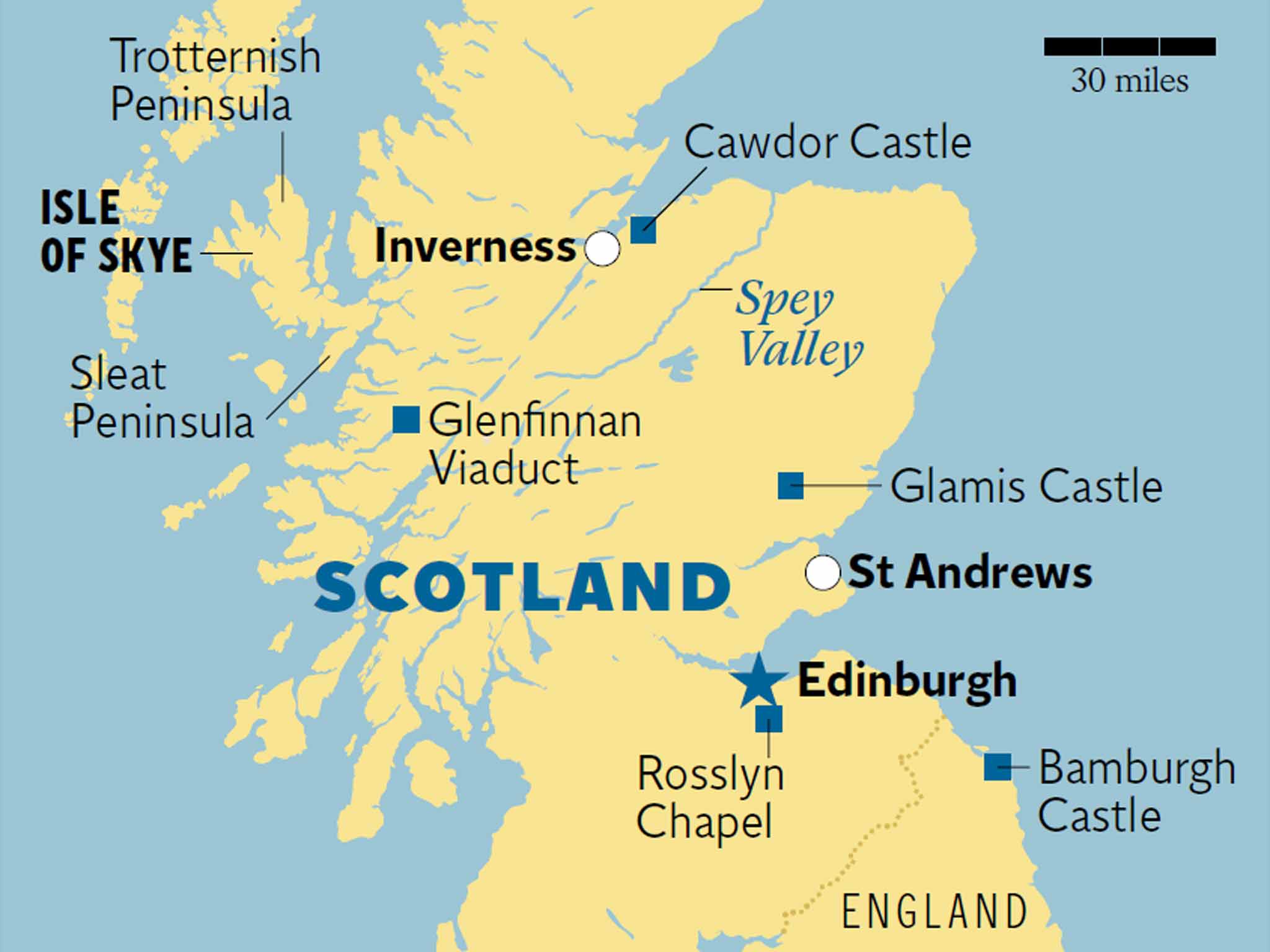Macbeth trail in the Scottish highlands and islands: King, Cawdor, Glamis, all
The latest film version showcases Scotland's dark and unforgiving vistas, says Lucy Gillmore

Your support helps us to tell the story
From reproductive rights to climate change to Big Tech, The Independent is on the ground when the story is developing. Whether it's investigating the financials of Elon Musk's pro-Trump PAC or producing our latest documentary, 'The A Word', which shines a light on the American women fighting for reproductive rights, we know how important it is to parse out the facts from the messaging.
At such a critical moment in US history, we need reporters on the ground. Your donation allows us to keep sending journalists to speak to both sides of the story.
The Independent is trusted by Americans across the entire political spectrum. And unlike many other quality news outlets, we choose not to lock Americans out of our reporting and analysis with paywalls. We believe quality journalism should be available to everyone, paid for by those who can afford it.
Your support makes all the difference.For those of us not in the film industry, the words “on location” are steeped in glamour. For the cast of the new film adaptation of Macbeth, the notion of glamour is probably not at the top of their minds when they remember shooting on the Isle of Skye in the depths of a wild, wind-whipped winter.
Michael Fassbender and Marion Cotillard, along with the rest of the cast and a host of extras, spent weeks squelching through icy bogs and warding off frostbite – without a scrap of Gortex between them. The cry “Hail Macbeth” no doubt began to sound like a bad joke.
Macbeth, or “the Scottish play” – one of Shakespeare's grisliest tragedies – was set in a brutal 11th-century Scotland, so it's natural that director Justin Kurzel was drawn to the Scottish Highlands during their harshest, bleakest months to shoot much of the film.
Skye is a cinematographer's dream. A small corner of the island, the Sleat peninsula, is dubbed the “Garden of Skye” for its gentle, green, wooded setting but, for the most part, it's bare, bleak, brown and treeless, dominated by the darkly dramatic Cuillin mountain range and pockmarked by otherworldly rock formations. Fassbender's Macbeth rides past the Old Man of Storr on the Trotternish Peninsula in the far north, where much of the action is set, a pointed shard fracturing the skyline. Lashed by rain, stung by hail, caked in mud and blood, Macbeth's army trudges the boggy heather-sprung moor through a swirling mist.

This is also where you will find the weird and wonderfully named Quiraing, above Staffin Bay, which features the Prison, a ridge which – squint slightly – could be a castle keep, and the Table, an eerie green plateau. Cotillard's Lady Macbeth journeys barefoot across this barren landscape on her way home to her village. The film showcases the raw grandeur of the Scottish landscape to full, dark effect. It is the perfect backdrop for all the gruesome murders and blood-spattered battles, and mirrors the mental and emotional turmoil of the characters. And out of season the island has one major advantage: there are no caravans on the single-track roads which snake across the island.
Skye, the largest of the Inner Hebrides, is home to 12 munros – peaks over 3,000 feet – and is spider-webbed with walking trails. Visit Scotland has produced a digital map highlighting the locations in the play and the film, along with places connected to the real-life Macbeth, who ruled the lands around Inverness and the Spey Valley 1,000 years ago. “Macbeth: The Man, Myth & Legend” allows you to create your own trail around the Highlands.
The tourist board is hoping Macbeth will do for the Highlands what the Harry Potter films did for the Glenfinnan Viaduct, or Dan Brown's The Da Vinci Code did for medieval Rosslyn Chapel, just south of Edinburgh. Over the years the movies have done much to promote Scotland's beauty. Remember the athletes racing through the spray on St Andrews' West Sands Beach in Chariots of Fire? And Christopher Lambert careering, kilt flying, across the bridge of Eilean Donan castle in Highlander?
Castles feature on the Macbeth map. North of Dundee, Glamis Castle is in the play, although the real Macbeth never lived there. Also, in both play and film, King Duncan makes Macbeth the Thane of Cawdor. Yet Cawdor Castle, outside Inverness on the Moray coast, was not built until the 14th century – though it has long been a must-stop on any Macbeth pilgrimage, and in summer often puts on open-air Shakespeare performances.
The stronghold chosen by Kurzel is Bamburgh Castle, a craggy fortress perched on the Northumberland coast. For centuries, all the Scottish kings – including Macbeth – were crowned at Scone Palace, sitting on the Stone of Destiny, just outside Perth. However, lush Perthshire was likely too pretty for Kurzel's adaptation. The new film is a tour de force in which the landscape has a starring role – and if you go to Skye now, you might just get the place to yourself. Just pack your waterproofs.
'Macbeth' is in cinemas now
Getting there
Take the train as far as Mallaig or Kyle (0344 811 0141; scotrail.co.uk). Caledonian MacBrayne (0800 066 5000; calmac.co.uk) operates ferries from Mallaig to Armadale on Skye, while buses connect Kyle with the island (stagecoachbus.com).
Visiting there
Glamis Castle, Angus (01307 840393; glamis-castle.co.uk).
Cawdor Castle, Nairn (01667 404401; cawdorcastle.com).
Bamburgh Castle, Northumberland (01668 214515; bamburghcastle.com). Scone Palace (017385 52300; scone-palace.co.uk).
Macbeth Trail: bit.ly/MacTrail
More information
Join our commenting forum
Join thought-provoking conversations, follow other Independent readers and see their replies
Comments